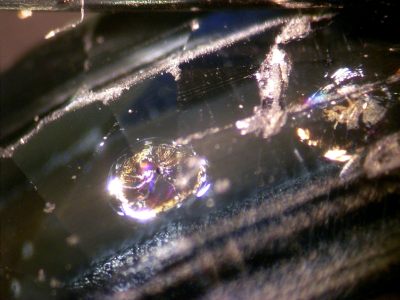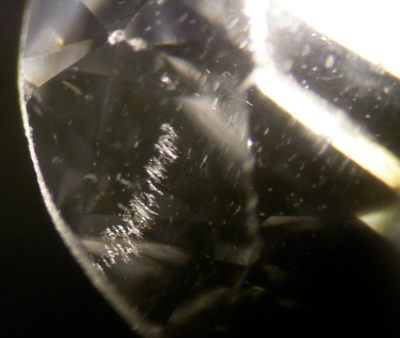Why are gems beautiful?
The charm of crystals
All solids tend to form crystals - even metals when examined under the microscope are crystalline. To prevent crystals forming the molten material must be cooled quickly - as is glass. Almost all gems are crystalline, except opal, and the organic gemstones (pearls and amber).
In crystals the atoms are arranged in order, and as a result most single crystals are transparent to light. The light will be refracted internally, often split into 2 rays, and may show the same rainbow effects as if passed through a prism. While some minerals are always coloured, quite often it is impurities within the crystal which cause the different colours - somehow impurity seems the wrong word to describe what causes the beautiful colour of gemstones! These impurities are traces of other elements, which don't form part of the basic crystal structure.
Some gemstones consist of many small crystals, which do block the light and appear opaque. Agate is a popular example.
To early man, these crystals must have seemed miraculous - how could something with a geometric form and such transparency be natural? Small wonder that they were believed to be gifts from the gods, and deemed to have mysterious powers. I have only listed a few of the many traditions linked to gemstones, but I hope you find it interesting, and it will give you some idea of how man has always respected these stones.
Understand how crystals crack - causing fracture planes
Everybody knows gemstones are hard. But the alignment of the atoms in the crystal causes some very curious effects. Gemstones are harder in one plane than in others. While not a crystal, consider the way water forms a skin, so that insects can stand on it. What happens is that electrons at the surface are unable to form the usual bonds with other atoms, and this causes surface tension.
Mica is an extreme example. The mineral is quite tough, yet comes in extremely thin slices which can be easily split apart. In gemstones the plane of minimum strength is called the cleavage plane. Diamonds can be easily split along that plane.
This tendency to split along planes helps us to understand the fractures which occur in gemstones.
Many gemstones, while hard are also brittle. A hard knock, especially along the cleavage plane, can damage a stone. So always take good care of your jewellery.


